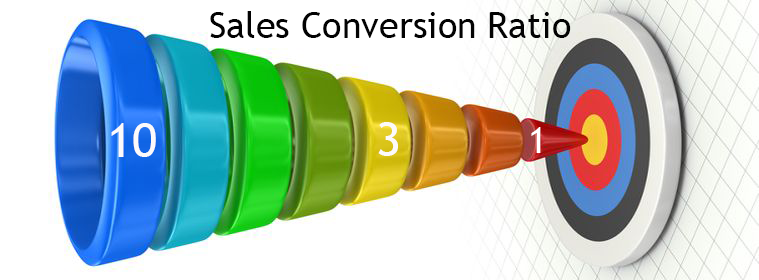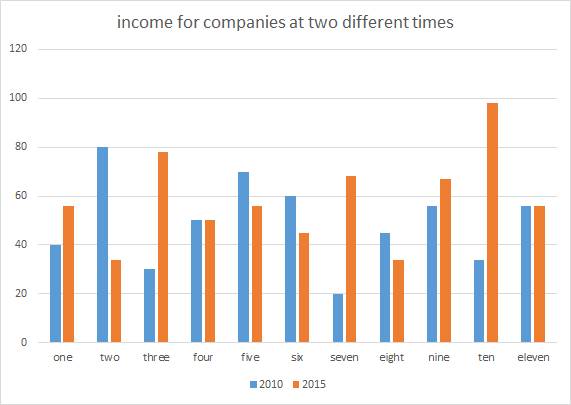
At Barrett, we get asked a lot about what is the right sales conversion ratio for sales teams.
And our answer is to offer more questions such as:
- Are the market(s) you are targeting in growth, mature, decline, or saturation mode?
- What value propositions are you taking to market to your prospective clients in terms of commodity low cost options or value beyond product and price, and ROI?
- How clear is your sales messaging to capture the share of mind of your target markets and enable your salespeople to be very clear and concise about the value they bring when prospecting and selling?
- How effective and efficient is your current sales team at capitalising on lead generation and prospecting activities to drive new opportunity?
- Have your found ‘clear water’ sub or micro market segments that put you ahead of your competition so you can do business with them?
- How effective is your current sales leadership, sales induction and ongoing sales coaching and development program to help your sales team be sales fit and able to continue to improve their sales effectiveness?
These are some of the questions sales leaders and salespeople should be asking themselves when it comes to working out the answer to the question ‘What is the right sales conversion ratio for my team?’
A sales conversion ratio is not fixed, there is no magical number, it changes and shifts as markets change and shift.
We are dealing with a variable complex system where markets can run from ‘hot’ to ‘cold’, new competition enters or new disruptive technology or business models can render old models obsolete.
At any given time the sales conversion ratio will vary even if every salesperson in our team meets the minimum standard of sales excellence expected in that role.
A common sales conversion ratio that has been around for some time in B2B sales is 10:3:1.
What this translates into is that for every 10 contacts I actually speak to in my given segment, 3 will be viable prospects – ‘ready to buy now’, and from those I will get 1 sale. This way of looking at sales activities is helpful in that it starts to give the salesperson some idea of what they will need to do by way of activities to hit their sales targets. But do not be fooled into thinking this is the golden number we all need to be aiming for. This is but a model to illustrate a point and get us thinking about what does our sales conversion ratio need to look like given our current circumstances.
We need to factor in a range of things to understand what a good sales conversion ratio looks like at any given time. As per the questions above your answers will impact the ratios.
 As sales professionals we need to move beyond looking for the magic sales conversion ratio number and track what is working for our business in our current markets with our current salespeople and clients.
As sales professionals we need to move beyond looking for the magic sales conversion ratio number and track what is working for our business in our current markets with our current salespeople and clients.
We know that in ‘hot’ markets we can have fantastic sales conversion ratios simply because everyone wants what we’ve got. One of our clients in the mining sector saw this firsthand 10 years ago when the mining boom was in full swing. They just stood there with the doors open and sold, sold, sold. They couldn’t keep up with supply. Their sales conversion ratios where off the charts. Fast forward to now and the sales conversion ratios tell a very different story. They are in a very ‘cold’ market; however, this is where the real test comes as to how effective a sales team can be. Knowing that they had to do something this business played it smart, and working with Barrett, did the following:
- Audited their sales strategy and operation framework looking for strengths, gaps and areas for development which meant that they needed to reset their sales strategy and ‘how we sell around here’
- Refined their sales messaging and value proposition
- Undertook a detailed market segmentation analysis to find those pockets of value and opportunity in their market segments and separate them from the commodity plays happening in the market place
- Trained and skilled up their sales teams to know where and how to go and find those pockets of value and get in front of the prospects that mattered
- Introduced a strong and clear sales leadership and coaching framework and capability that leads, supports and holds to account the sales team
The early signs look very promising with this work yielding very good results. And although very different from 10 years ago, the current sales conversion ratios of this sales team as compared to the competition are looking very good.
This sales force is now much better at making more proactive prospecting calls to the right targets; better at qualifying prospects and getting in front of them with the right value propositions; much better at understanding their prospects/clients priorities and delivering viable solutions that deliver the right results for their clients.
Taking a holistic approach to improving a sales force will have a direct impact on their sales conversion ratios because this ratio is a number made of both qualitative and quantitative factors.
So instead of focusing on a sales conversion ratio nirvana, work out the current sales conversion ratio your sales team and business need to be successful in your market now.
A great way to define your current sales conversion ratio number is to keep track of your revenue generating activities and the quality of such activities and watch the impact on your results. Activities such as:
- Prospecting calls made: attempts to get through and actual connections made
- Prospecting calls made that lead to client meetings: phone/Skype meetings and face-2-face meetings
- Client meetings that lead to viable proposals being developed and presented to the prospective clients
- Client meetings/proposals that lead to closed (won) business
- Follow up / Review calls made to clients about the effectiveness of your solutions and how it helped them or not
- Review meetings that lead to more business (if relevant) and so on.
Remember everybody lives by selling something.
Author: Sue Barrett, www.barrett.com.au


New Article Email Notification